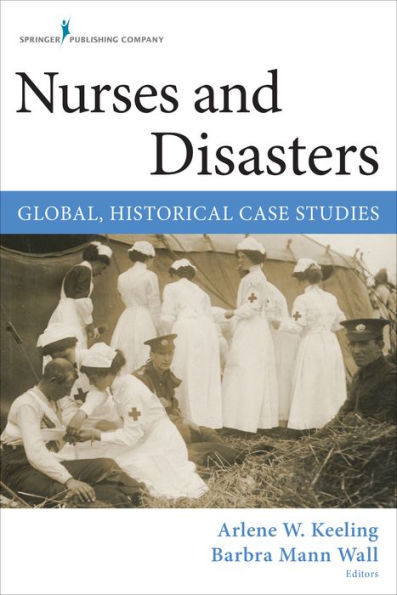This timely volume describes and analyzes the nursing response to a variety of historic and recent global disasters that occurred between 1885 and 2012, including Hurricane Sandy. The book is unique in its discussion of cooperation and conflict in the disaster responses regarding the mobilization of individuals across national borders and continents. It examines how partnerships developed, their implications for policy, and how we can use lessons learned to improve care in the future.
The book addresses such questions as: How did local, regional, and national communities mobilize for emergency care? What was the role of local nurses in emergency care after disasters? What was the role of the national or international Red Cross, local and federal governments, physicians, nurses, and other first responders? What was the impact of social attitudes and issues of race, class, and gender on the ways nurses and other health care professionals reacted to the disasters? How did unpreparedness for the type or scope of the disaster affect the response? The book will be of value to a wide variety of undergraduate and graduate students in nursing, social work, history, health policy, women’s studies, public health, and urban studies.
KEY FEATURES:
- Addresses the role of nurses in di saster response
- Highlights nurses’ roles in di sasters that occurred in the context of World War II—heretofore unaddressed in the interest of political correctness
- Discusses policy implications of the different disasters
This timely volume describes and analyzes the nursing response to a variety of historic and recent global disasters that occurred between 1885 and 2012, including Hurricane Sandy. The book is unique in its discussion of cooperation and conflict in the disaster responses regarding the mobilization of individuals across national borders and continents. It examines how partnerships developed, their implications for policy, and how we can use lessons learned to improve care in the future.
The book addresses such questions as: How did local, regional, and national communities mobilize for emergency care? What was the role of local nurses in emergency care after disasters? What was the role of the national or international Red Cross, local and federal governments, physicians, nurses, and other first responders? What was the impact of social attitudes and issues of race, class, and gender on the ways nurses and other health care professionals reacted to the disasters? How did unpreparedness for the type or scope of the disaster affect the response? The book will be of value to a wide variety of undergraduate and graduate students in nursing, social work, history, health policy, women’s studies, public health, and urban studies.
KEY FEATURES:
- Addresses the role of nurses in di saster response
- Highlights nurses’ roles in di sasters that occurred in the context of World War II—heretofore unaddressed in the interest of political correctness
- Discusses policy implications of the different disasters

Nurses and Disasters: Global, Historical Case Studies
250
Nurses and Disasters: Global, Historical Case Studies
250eBook
Related collections and offers

Product Details
| ISBN-13: | 9780826126733 |
|---|---|
| Publisher: | Springer Publishing Company |
| Publication date: | 06/04/2015 |
| Sold by: | Barnes & Noble |
| Format: | eBook |
| Pages: | 250 |
| File size: | 3 MB |
